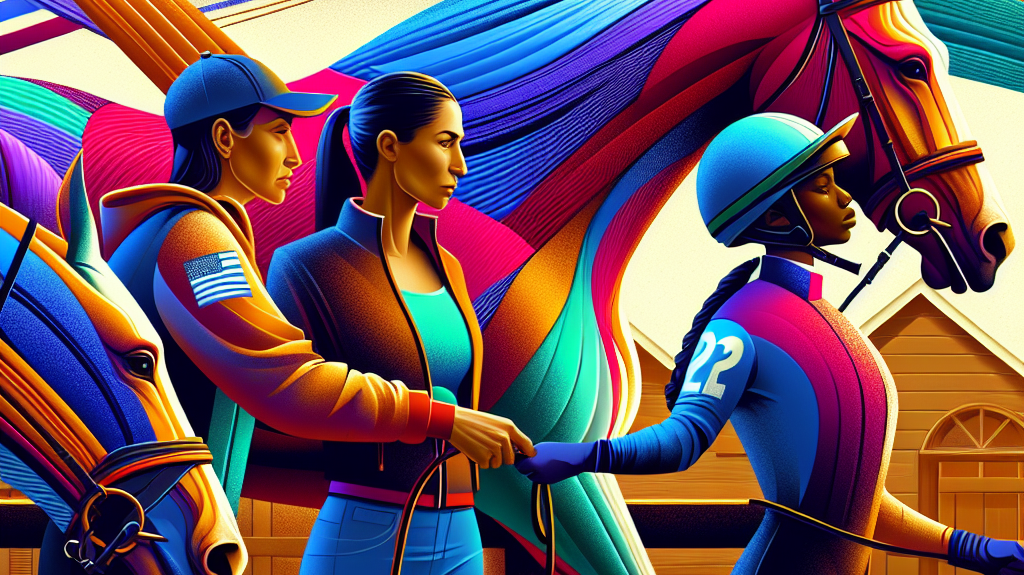Excitement Builds as Paris 2024 Olympic Equestrian Entries Announced
The equestrian world is buzzing with anticipation for the Paris 2024 Olympic Games. The FEI (Fédération Equestre Internationale) has confirmed the participation of 49 nations, featuring 200 horse and rider combinations. This globally representative event promises fierce competition and thrilling performances.
Among the confirmed riders, British eventer Laura Collett, riding the renowned London 52, stands out as a favorite. The FEI also referenced 51 alternate partnerships, ensuring that backups are in place for any last-minute changes. With riders and horses from various countries preparing rigorously, the stage is indeed set for a spectacular Olympic equestrian event.
Technological Advancements Revolutionizing Eventing
One of the most talked-about aspects in the lead-up to the Games is the integration of technology in eventing. Philip Surl, a prominent figure in the eventing community, has voiced strong support for rider-official collaboration to enhance the sport. Drawing comparisons with the Hawk-Eye system in tennis, Surl advocates for similar technological advancements in eventing.
Initially met with resistance, Hawk-Eye has become an accepted and relied-upon standard, lauded for its accuracy and fairness. Surl believes that eventing can benefit enormously from similar innovations, which could improve both the accuracy of judging and the overall experience for spectators. Imagine a future where disputes over scores are relegated to the past, thanks to foolproof tech solutions!
The Emotional Toll of Severe Equine Health Issues: A Study on Communication in Colic Cases
Another significant discussion within the equestrian community focuses on a recent study highlighting the importance of communication between horse owners and veterinarians, particularly during severe health crises like colic. The study underscores the necessity for open dialogue to ensure informed decision-making, reducing the emotional burden on owners.
Colic can be a life-threatening condition for horses, often requiring emergency intervention. The study found that better communication can profoundly impact the outcomes of these critical situations. By fostering clearer, more empathetic dialogue, owners are empowered to make decisions that best support their horses' health and well-being. This research has opened new avenues for improving veterinarian-client interactions and could drive better care practices moving forward.
The Future of Equestrian Sports: Balancing Tradition and Innovation
The ever-evolving landscape of equestrian sports demands that we stay abreast of both historical practices and future trends. Exploring advancements in technology and their applications in sports can offer invaluable insights. This includes reviewing existing tech implementations like precision tracking for horses’ bio-metrics, monitoring their health and performance with unprecedented detail.
Additionally, understanding the psychological impact of severe equine health issues on owners equips the community to offer better support systems. Discussions about training regimens, the welfare implications of high-stakes competitions like the Olympics, and comprehensive care strategies are also paramount for a sustainable future in equestrian sports.
Concluding Thoughts
The article "Olympic entries, tech in eventing, and more things the horse world is talking about" offers a well-rounded look at the current developments defining the equestrian world. From the announcement of Olympic entries stirring global anticipation to forward-thinking propositions for tech adoption in eventing, and critical insights from studies on severe health issues in horses, there’s plenty to ponder and explore further.
The journey to Paris 2024 is not just about thrilling competitions but also about embracing innovations and improving the overall well-being of the horses and the people who care for them. Staying informed and engaged with these evolving narratives ensures that the equestrian sports community continues to grow, adapt, and thrive.
For more detailed insights and updates, visit the original articles: Horse & Hound




